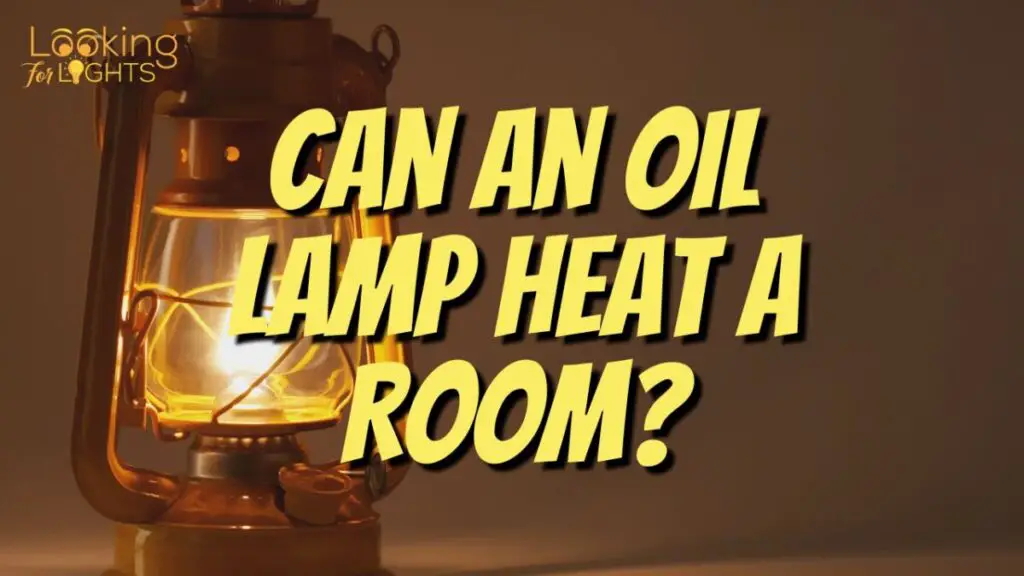Sometimes, the electricity supply can go off, and when it does, you cannot resort to staying in the dark. There should be a second option for generating light. This is where oil lamps come in.
During the cold season, burning an oil lamp can heat a room. It produces both light and heat at the same time, especially when a country’s grid is down. Oil lamps also generate more heat than some other types of lighting.
To safely heat your room with oil lamps, you need to adopt the use of recommended lamp oils. Are you looking to use oil lamps in your home soon? This piece provides all the answers you will need!

Table of Contents
Type Of Oil Used For Oil Lamps
Oil lamps have been in existence for decades now and so many people still use them. They are a great alternative to electricity and they can be used for different purposes.
They make use of oil as their source of energy and there are different types of lamp oils, knowing which one to use will determine how effective the lamp will burn and how bright the light would be.
Generally, you should pick odorless, smokeless and clean oil. Contemporary and organic lamp fuels are the best and below are the ones that you can pick.
Before we go on to talk about oil lamps and heat production, let’s first look at the different types of oil lamps that exist.
1. Fish Oil
This other lamp oil is gotten from tissues of oily fishes and is used by several countries to fuel their lamps.
2. Castor Oil
This is a vegetable-based oil that is obtained from castor beans and Ricinus communis. It is a renewable resource and is environmentally friendly. Countries like Egypt and India have used it to fuel their lamps for decades.
3. Lamp Oil
Lamp oil is highly valuable, but it has been carefully processed to burn efficiently and produce little or no odor with the lowest level of soot possible.
Lamp oils can either be clear, scented, or colored. The clear lamp oils are for indoor use. Scented lamp oils, on the other hand, produce smoke when burning. This is why you should only use them outside.
The color lamp oils can be used indoors or outdoors depending on what you want. You should keep them away from open air because it evaporates easily.
4. Palm kernel oil
This oil is gotten from the palm kernel, it does not produce any smell, it does not spark flame easily and it can be used where there are children and pets.
5. Canola Oil
This oil is gotten from grape seeds, and it is one of the best organic lamp fuels.
6. Kerosene
This is one of the most popular, most used, and highly available lamp oil. It is a clear oil that produces bright yellow flames.
7. Olive oil
Olive oil is the best alternative for lamp oils and kerosene. It does not produce a bad smell, and it is smokeless.
How Much Heat Does An Oil Lamp Produce?
A 14-inch circular burner oil lamp, for instance, uses about 40g of lamp oil in 60 minutes. That’s around 53-54 ml per hour, which means that lamp oil uses up to 508 watts of energy. This energy is then converted to 102 watts of heat, 405 watts to conduction heat, and just 126 watts are used to create light.
In addition, 0,25% of all the energy injected is transformed into light. This makes the oil lamp good for heating a room.
Do Oil Lamps Cause Fire?
Yes. However, this happens if or when it’s not properly handled. That’s why all oil lamp users are advised to apply safety precautions at all times, especially indoors.
Usually, oil lamps produce flame and tend to produce gas, which makes them hotter during usage.
While using an oil lamp, ensure to:
- Select the right, safe and reliable lamp fuel.
- Avoid flammable substances, such as gasoline, alcohol, mineral spirit, and so on.
- Remove it within the reach of your children or pet.
- Since the chimney gets hot when the light is on and even when it’s turned off, you need to use caution.
- Keep any ignitable substance away from the chimney when it’s hot.
- Pay proper attention to your oil lamp during usage. It doesn’t matter if it’s ON or not, you should always check it.
- Avoid adding oil when the oil lamp is at the heat level. Instead, you can turn it off and let it get cool before you add fuel. Adding fuel to a hot oil lamp can lead to a fire outbreak.
- Lastly, keep a carbon monoxide detector in your house to avoid fire outbreaks.
Can Kerosene Lamps Heat A Room?
If you’re using a kerosene lamp, there’s a chance that it can heat a small room. This is possible because the lamp can discharge a high volume of heat. You won’t be wrong if you call kerosene lamps “space heaters” and “bright light” in one.
In three to four hours each day, a kerosene lamp can consume up to a liter of oil per week depending on how bright the light is. It can also produce about 900 BTU per hour and can discharge around 7 candle power.
Can You Use Kerosene Lamps Indoors?
Yes, you can use a kerosene lamp indoors. But you need to be careful as it can emit sulfur and other unpleasant substances, which may not be good for your health.
Also, it produces smoke and soot. If you burn a kerosene lamp outside, you may not be bothered by the odor but indoors, you should create space for a little bit of ventilation.
How Do Oil Lamps Work?
An oil lamp is one of the earliest sources of lighting for mankind. Now, it can be used for different purposes, such as decoration, source of emergency, and so on.
The oil lamp mechanism is very simple: it has a wick that transfers liquid fuel that is consumed by the flame. An oil lamp in its normal level of functionality produces more light than a candle.
There are two types of oil lamps that you can get:
- Floating wick lamps: These are mostly used for decorative purposes.
- Adjustable flat or round wick lamps: They mostly have a glass chimney or globe to protect the fire.
Do Oil Lamps Produce Carbon Monoxide?
Oil lamps do give off carbon monoxide, but only in small amounts. Moreover, the amount of carbon monoxide produced is determined by the type of fuel used, its burning efficiency, and many other factors.
You might be wondering why an oil lamp produces carbon monoxide. That’s primarily because, in oil lamps, processed oil or paraffin is used. These substances are made from hydrocarbon materials that are produced from the petroleum refining process.
While the oil produced through this process burns efficiently, it still has some disadvantages, such as releasing a large quantity of smoke and soot.
For instance, when you burn fossil fuel, it leads to complete combustion, and that’s because it contains carbon(c) and hydrogen(h). These two elements merge to produce carbon dioxide and water.
Are All Fumes Produced By Oil Lamps Toxic?
Because oil lamps, especially kerosene lamps, produce harmful air pollutants, such as carbon monoxide, black carbon, and carbon dioxide, you can say that the fumes are toxic to the human body.
Carbon monoxide is colorless and odorless. When inhaled, it goes into your bloodstream and prevents the blood from transporting useful oxygen to places like the brain and the heart.
In addition, the harmful effect of CO can depend on certain factors, such as the general health condition of a person and the level of functionality. For example, a pregnant woman, an asthmatic patient, or someone with a particular heart disease can be greatly affected by carbon monoxide.
Carbon monoxide can cause nausea, headache, weakness, dizziness, vomiting, and so on.
Related Posts: Can I Burn Olive Oil In An Oil lamp?
Why Does My Lamp Produce Smoke?
Usually, an oil lamp is expected to produce smoke when it has an untrimmed wick. Also, smoking can happen if the oil lamp is creating a draft due to an uneven attraction of air into the lamp flame.
How Long Can You Leave An Oil Lamp On?
Whenever you refuel your lamp, the oil can last for as long as a candle of the same size. A small lamp can last for 4 hours if the flame level is low and moderate.
Conclusion
Oil lamps can heat a room real quick. However, the rate at which it heats a room is determined by different factors: the size of the room, the type of oil lamp, the duration of when the oil lamp has been ON, and the kind of lamp oil that is used.
If you’re looking to use an oil lamp, keep in mind that its chimney can get hot when it’s ON for a long time. This causes heat too. Most people prefer oil lamps during the cold weather as they can be very useful to heat your room.

